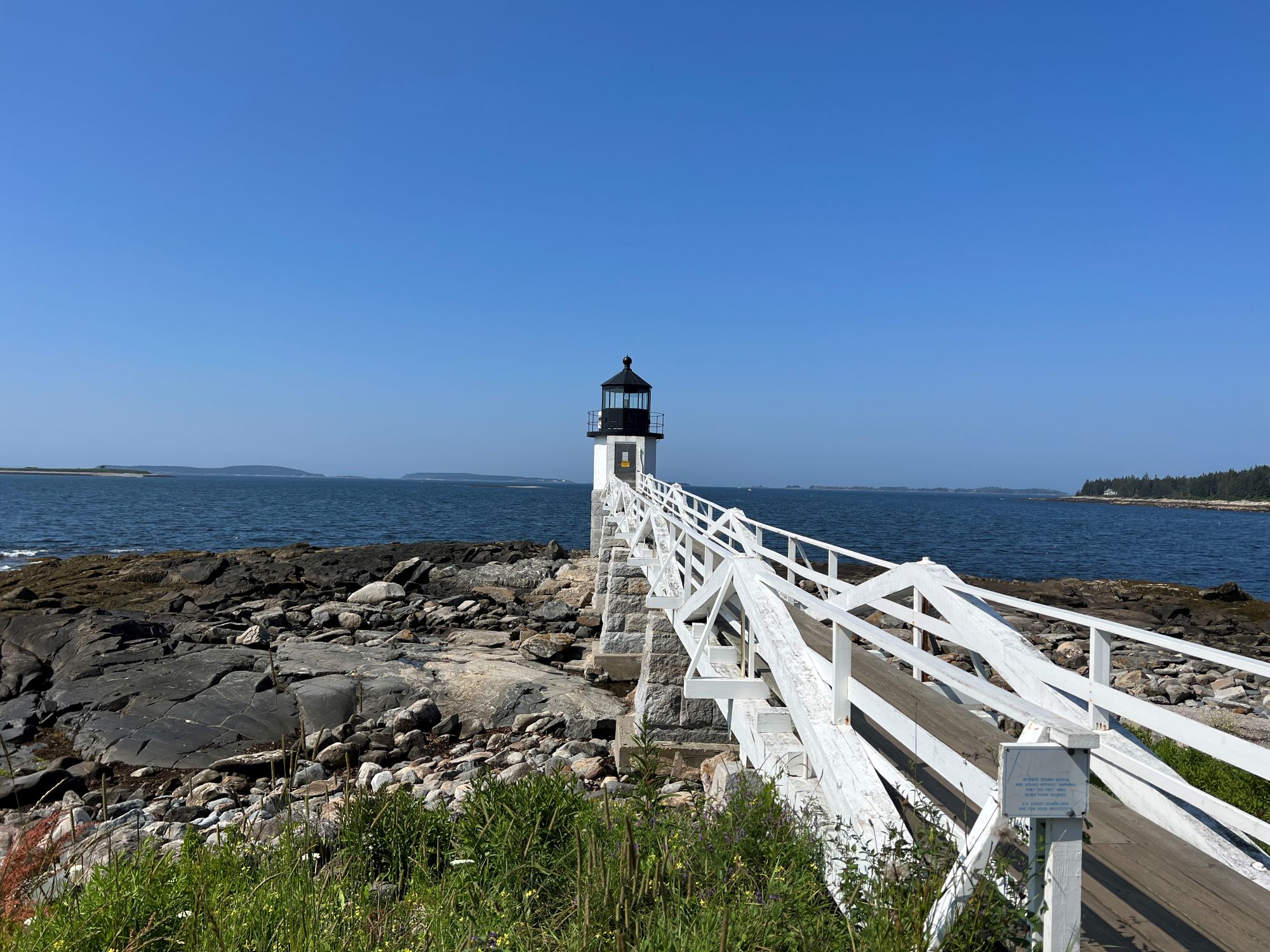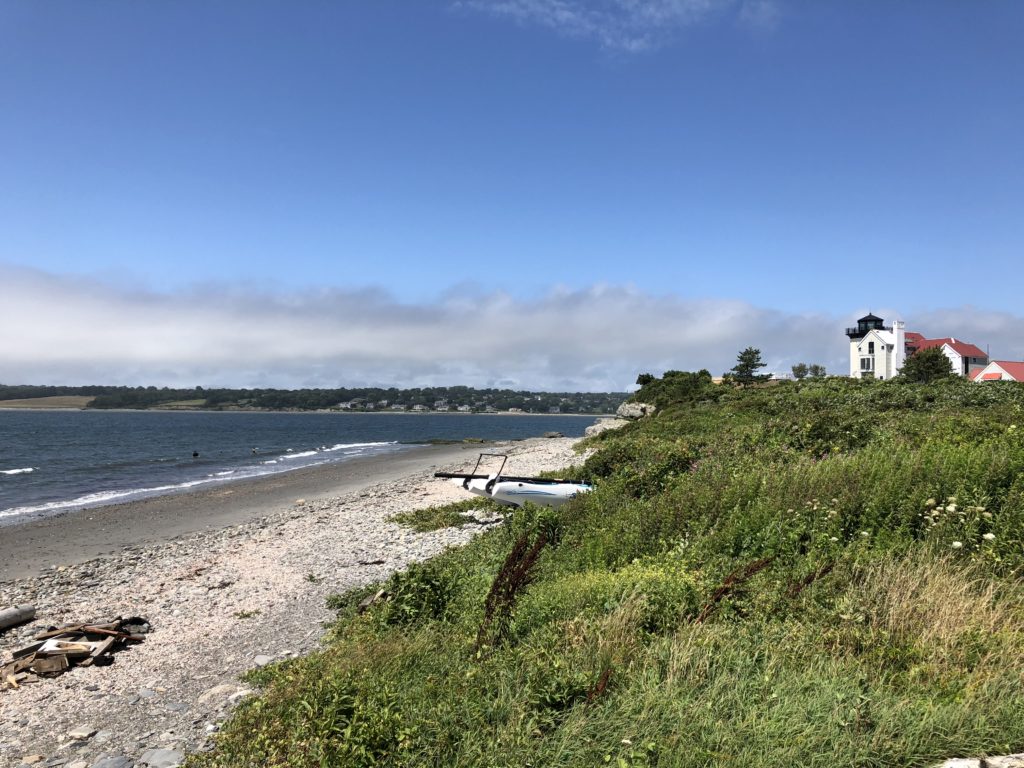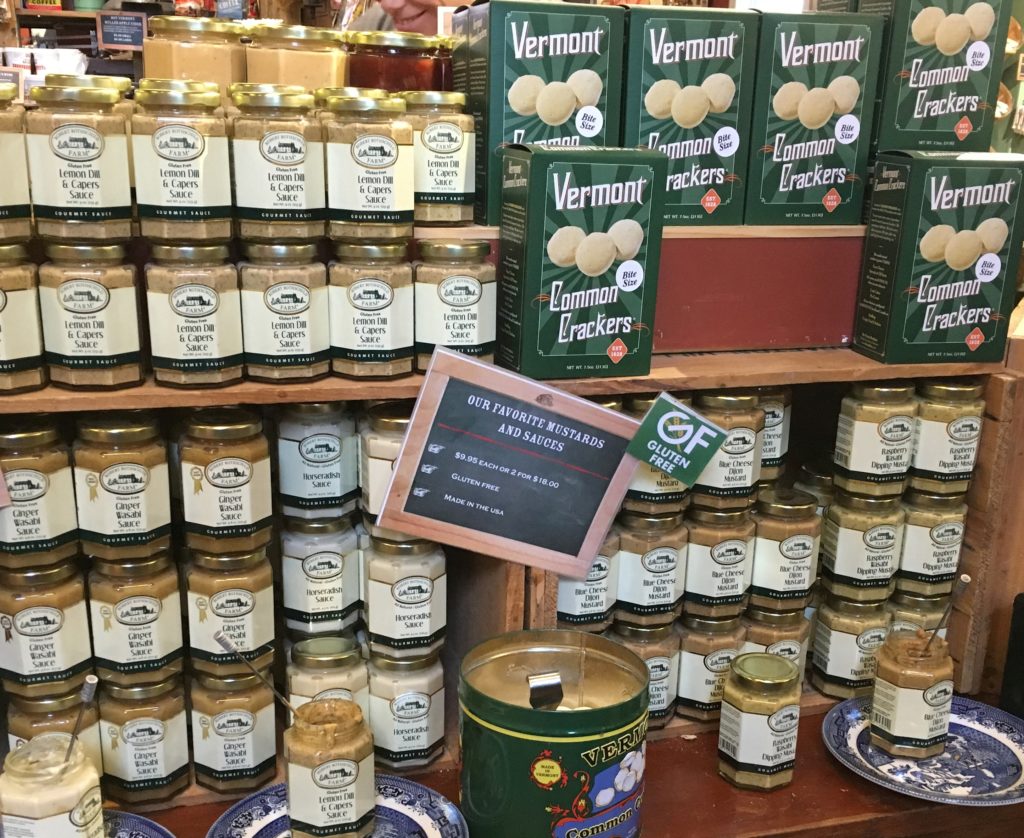Mapping out a week along the Maine coast, I set out from the Boston area mindful of a stern warning – do not drive to Maine on a Friday or return from Maine on a Sunday, unless you want to sit in miles and miles of 20-mile-per-hour, if not standstill, traffic on Interstates 295 and 95 and US Route 1. Noting the cars and trucks going the other direction, I was grateful that I had needed the firm advice.
Midcoast Maine starts about 180 miles north of Boston (a three- to four-hour drive) at Brunswick and extends north through the Camden-Rockland region to Searsport. Nearly 50 years ago we took the trip in our sporty silver MGB-GT, in those carefree years of shorts, tees and convertibles, hugging US 1 all the way north past the Midcoast to Acadia National Park at Bar Harbor. This time, I was on my own as both driver and navigator.
From Brunswick, not far north of Freeport (and LL Bean country), I crossed the Androscoggin River en route to historic Bath, site of the Bath Iron Works, and across the Kennebec River bridge. At Wicasset, marketed as “the prettiest village in Maine” (of which there are many), I saw the familiar queue of tourists lining up for lobster rolls at Red’s Eats’ tiny shack.
Leaving I-95 miles to the west, the scenery northeast along the coast became more rural, quieter. The scenic geography is rich and varied, and it’s easy for the eye to wander off the roadway ahead. My destination was the home of friends who are fortunate enough to own a home on a tidal cove off Penobscot Bay in Spruce Head. The perfect getaway along narrow country roads, this neck of the bay was an excellent base for day trips in a region deeply connected to its thriving history. You don’t have to drive far north or so to dive into icons of American art; centuries of whaling and lobstering; rugged recreational pursuits along the cold waters and high hills; and an intriguing diversity of wildlife (land and sea).
Five minutes away is the popular (and, honestly, much-hyped) family run McLoons Lobster Shack (315 Island Road, South Thomaston, tel: 207-593-1382), where lines form for the lobster rolls and corn on the cob throughout the day all summer long. It is definitely yummy, but lobster roll prices this year are swooning. While we didn’t venture over to McLoons this trip, on most menus, lobster rolls in Maine now easily fetch upwards of $29 per sandwich. (Being watchful, I finagled a less pricey dose of lobster in the revisionist culinary creations of the “lobster BLT” and “lobster-avocado toast.”)
Andrew Wyeth’s World
This is also the terrain where American watercolorist Andrew Wyeth painted the renowned Christina’s World, which I’ve always considered a haunting painting set on a stark landscape. With an equally large presence in their more southern home base, Chadd’s Ford, Pennsylvania, the Wyeth generations have freely populated this region’s coast and islands since the family began vacationing early in the last century in Port Clyde. Wyeth began painting in Rockland in 1939 and painted Maine people and scenes over a 60-year period on trips from his summer home in nearby Cushing, often sketching from the roof of his car as he traveled about.
The 75-year-old Farnsworth Art Museum in Rockland (16 Museum Street) spans several downtown blocks and features expansive exhibits by three generations of Wyeths – N.C., Andrew and Jamie. We set out to see the current exhibit, “Edward Hopper and Andrew Wyeth: Rockland, Maine,” which ends Aug. 27, 2023. On separate visits and decades apart, these celebrated artists painted some of the same scenes, memorializing Rockland’s hardworking industries during the 20th century; the exhibit places them side by side. Arriving in the summer of 1926, Edward Hopper created more than 20 watercolors of Rockland’s stately Victorian and Greek Revival architecture, transportation systems, working boats and their evolution and lime quarries. (Both Wyeth’s and Hopper’s styles and some of their subject matter from small towns mid-century remind me of my own father’s – who was a watercolor artist during the same era and whom I’ve written about here.)
Even though the exhibit ends soon, the Farnsworth is worth at least a day’s ticket any time of the year. Currently there are also exhibits of other famous American artists such as Louise Nevelson and Alex Katz, art by a wide selection of Maine “new voices” and a special collection related to the Olson House in nearby Cushing, where more than 300 of Wyeth’s drawings and paintings were centered.
Rockport Lime Kilns
After the museum, we drove up the road a few more miles to Rockport, another longstanding fishing village and a major supplier of lime to East Coast markets in the 19th century. Along the harbor, the remains of multi-story kilns are preserved for a brief glimpse of this vital local industry, which was responsible for mortar and finish plaster. The burned lime was packed into wooden casks and shipped by schooner to New York. Meanwhile, the production of paving block from granite quarries was the bread and butter of Midcoast Maine in the 19th century as well, cut by hand and loaded in the late 1800s and early 1900s on ships to major cities on the East Coast. Mining these natural resources in Midcoast Maine resulted in “pavers” for city streets and large municipal structures such as banks, post offices, churches, bridges and most of the early tunnels in New York City.
Marshall Point Lighthouse
Dating back to 1832, the Marshall Point Lighthouse became one of 22 other lighthouses on Penobscot Bay, a treacherous island-filled corridor leading inland from the ocean and part of critical cargo and pleasure sail routes north from Boston. What’s most remarkable about this lighthouse, which has transformed from rubblestone and lanterns to a granite tower with electricity and a foghorn and positioned prominently at the entrance to the harbor of the fishing port of Port Clyde, however, is not its history but its geological footprint.
Geologists, tourists and school children travel here from afar to view and study the exposed sedimentary layers formed nearly 500 million years ago, shaped and metamorphosed over time by volcanos and other earth-shaking phenomena. Layers of sand and mud, folded by heat and pressure, today support the lighthouse and display as waves of color, quartz and feldspar rock, gray granite, dark basalt and other materials. Even to the untrained eye, it is an awesome experience to trek in sandals along the lighthouse’s walkway and peer down at the array of earth tones decorating boulders and sheets of rock that are eons-old.
That venturing here is indeed a journey was recognized by filmmakers of “Forrest Gump,” in which Tom Cruise’s character concluded his cross-country run on the lighthouse’s runway. (Researching this article, it was a bit eerie to read that the lighthouse tower was hit by lightning and removed for repair or replacement just two days after I visited! A minor intrusion for the sturdy structure given its extraordinary millennial history.) Nonetheless, the museum and gift shop are open daily, run by a dedicated cadre of 60 volunteers. You can see artifacts from the lighthouse’s history and coastal industry, and access a reference library.
Tiny Port Clyde is also worth a visit. On my last trip here in 2018, we took the Monhegan Boat Line to secluded puffin breeding islands far out in the bay. You can read about the specialized tours where tourists can discover the unusual bird here.
From Port Clyde you can also catch a ferry/heavy duty workboat for the one-hour trip out to Monhegan Island, a small wild and rugged square-mile island 10 miles out in the Gulf of Maine and a key navigational point into Penobscot Bay. Once a thriving culture of fishermen, farmers, teachers and artists, Monhegan Island is now a small community of only about three dozen year-round residents. Tourists make the trek to experience the century-old artist colony, historical nautical economy, Monhegan Museum of Art and History, another important lighthouse, a few inns and 12 miles of hiking trails.
For a quick visual of Midcoast Maine and the many destinations, I always consult this resource – the picturesque Discovery Map – Camden-Rockland, Maine.
If you get lucky and are able to book a reservation, the place to dine in Rockland is In Good Company, where the locals eat; it’s cozy like a living room and dining parlor and offers absolutely exquisite food and an extensive wine list (415 Main St., tel: 207-593-9110).



